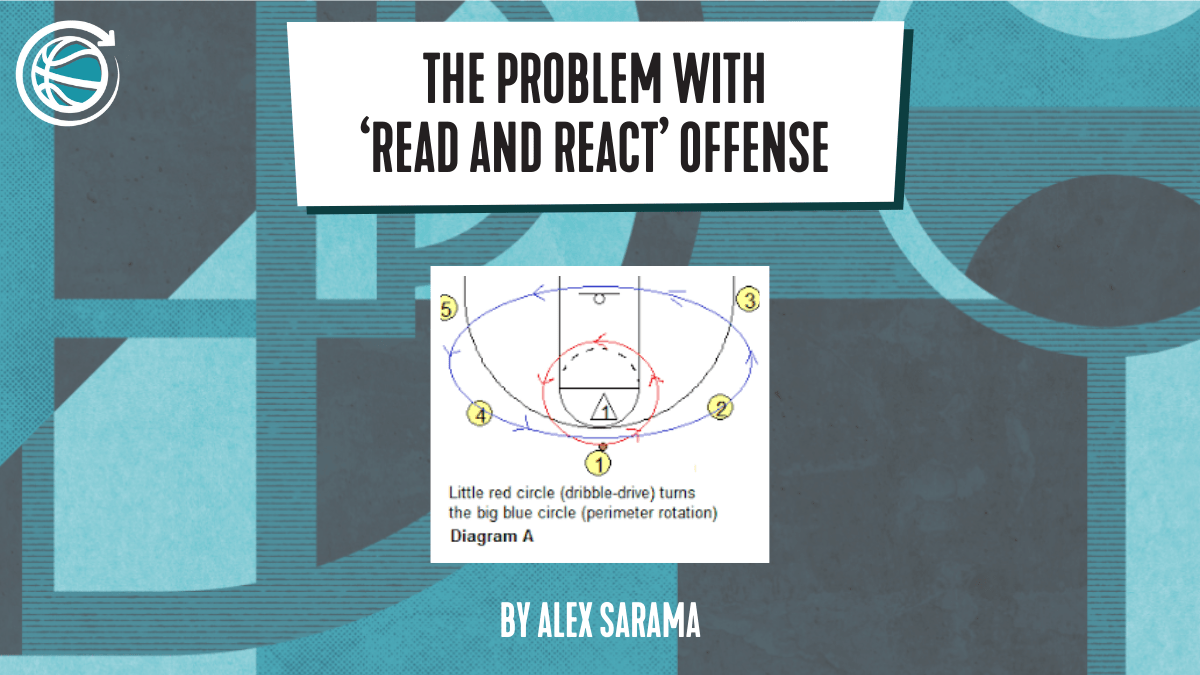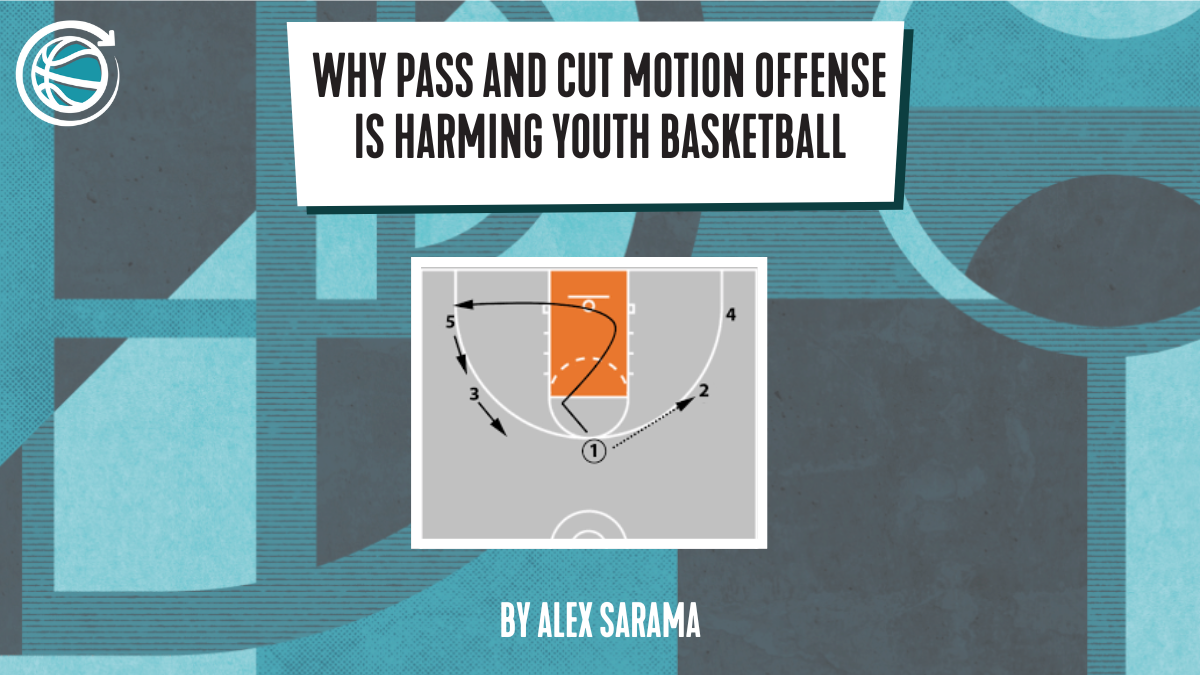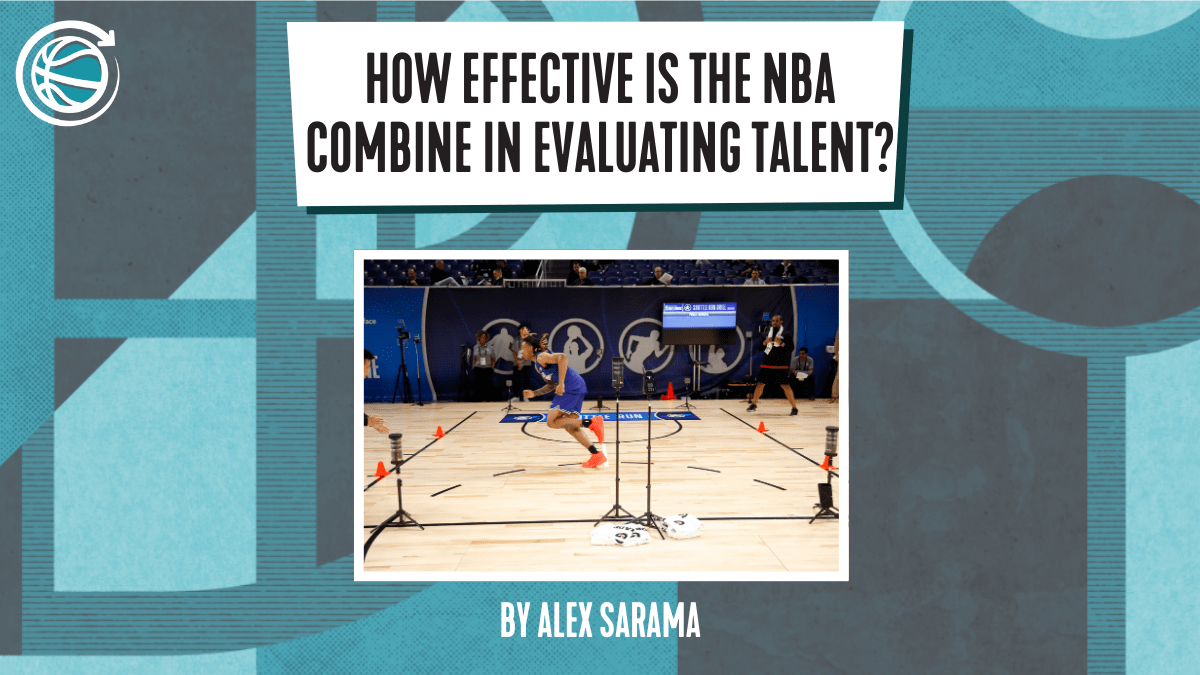The Problem with the Read and React Offense in Youth Basketball
The Read & React Offense is undoubtedly a much better alternative than a lot of the other extremely rigid motion offences or continuities that are used in youth basketball. But what are some limitations behind the premise of this highly patterned offense? In our opinion, why are alternatives, such as a conceptual offense, a better solution?
Decisions are Based on Offensive Movements vs the Defense:
Actions in the Read & React Offense are predominantly focussed on what the offense (and specially the ball handler) does and how teammates move. However, what constraint within 5-on-5 is most influential in impacting performance and shaping how the offense moves and adapts? It is of course the defense! While players will of course perceive and act upon affordances based on how their teammates move, the defense is the biggest factor that should impact what the offense does. The problem with the Read & React is how it forces players to attune primarily on offensive patterns, movements and motions, rather than actually perceiving defensive coverages.
The problem with using layers as ‘rules’ is that the framework becomes much too rigid, and players do not truly read and respond based on what the defense gives them. These is therefore no real decision-making, as decision-making should be predicated primarily on what the defense does. In a conceptual offense, offensive actions and movements are primarily dictated by how the defense guards the offense, followed by the interactions with other teammates (for instance, reacting to dribble penetration). In the read and react, movement would primarily occur based on where the offensive player goes (circle movement).
The alternative to read and react motion offense is conceptual offense…
Offensive Execution = Defensive Positioning + Teammate Interaction
The problem with the Read & React is that while some layers take the position of the defense into account (e.g making a front or backdoor cut based on the defender’s position), this is too reductionist and more of an “If X then Y” approach. Understanding Gibson’s notion of affordances allows coaches to come to a realisation as to why this is far too limiting.
Additionally, other layers conflict with this messaging and do not take into consideration how the defender guards the action. Basketball is a game of “it depends”, not strict absolutes. Strict rules do not lead to adaptable offensive teams.
This is why we have to be wary with coaching in absolutes. This can restrict players, especially when competing at higher levels. In the same scenario within a principles of play approach, players may have possibilities rather than musts.
- If the defender loses vision of you, you may wish to cut backdoor or find a window
- If the defender stays in deep help, you may wish to hold position or find a window
- If the ball handler’s drive gets levelled off, you may push, hold, or lift for a DHO
DOWNLOAD OUR FREE CONCEPTUAL OFFENSE PLAYBOOK
Automatic Pass, Cut, Fill:
One of the Read & React concepts is to automatically basket cut off any pass, with the weak side teammate automatically filling the vacated spot of the cutter. But why should we cut after every pass, especially when in dominoes (which one could argue is the whole goal of any offense). Stating that cuts must always be completed unnecessarily clogs up the paint, especially for teams proficient at advantage creation from 1-on-1, as well as removing opportunities for decisive off-ball cuts (e.g. ghost cuts). Pass and cut often becomes a crutch that coaches utter, confusing any type of random movement for good movement. However, the only type of good movement is one that cracks the ice and helps the offense decisively create an advantage.
From my experience when I first utilised the Read & React early on in my coaching career, players did not always want to expedite unnecessary energy by completing the basket cut. Additionally, why would we want our best players to give up the ball, be in the weak side corner, and then potentially not receive the ball again until late in the shot clock?
Pass and cut is not an action seen at any level of professional basketball due to the fact that the advantage-creation opportunities out of this action are minimal. This is even more so apparent when compared to other triggers such as flare screens, screen away, pick and roll etc. If this is not an action done at higher levels of basketball, why waste time doing it at the youth ages when players can spend the valuable time becoming more attuned to the situations which exist out of other triggers? Coaches believe pass and cut is a stepping stone, but maintaining great spacing, creating advantages through 1-on-1, and using double gaps by playing with the weak side dunker allow for far more skilful behaviours to emerge that can help players when they become older. The behaviours that emerge within this context are far more representative and conducive in becoming a skilled player.
More importantly, automatically filling off pass and cut action actually eliminates double gap spacing by bringing a defender into the action. I believe that one of the most important concepts for youth basketball is teaching players to recognise and take advantage of double and triple gap spacing. As Mike MacKay says, we want to teach players to be ‘late to the party,’ on the fill. If a player automatically fills the vacant spot, if the teammate decides to drive into the gap, the small advantage does not turn into a big advantage because the defender can easily disrupt the driving action. In other words, rather than preventing 1 defender from guarding 2, a player is actually bringing their defender to the party, disrupting or diminishing the affordance to drive.
Theoretically under Read & React rules, a player would fill the gap, and then space back out with circle movement to react to the drive. This however is simply not possible when considering the timing of this whole sequence. Playing in zero seconds on a catch means that a team does not have enough time to make a two-way movement by filling the gap and then completing the circle movement action.
DHO’s & Dribble At:
In the Read & React, the DHO is a pre-determined action based on how the ball handler dribbles at their teammate. If the ball handler dribbles towards their teammate it is a cue to cut backdoor – this is called the ‘dribble at.’ If the ball handler dribbles turning their back, it is the cue for a DHO (in the Read & React this is known as the Power Dribble). The problems with this are multifold:
- If the ball handler turns their back, they are not in a scoring situation and good defenders can seriously disrupt this action. In other words, affordances to pass and drive (reject/ split the DHO) are greatly reduced. Turning away from the rim does not give players good “PVAD” (Positioning leads to Vision to Anticipate your Decision – Mike MacKay) to pass to other teammates.
- Teaching the DHO and Dribble At in this manner gives extra time for the defense to prepare for what is coming. Defense will know that the read is a back-door if the ball handler faces them, and likewise, can prepare an aggressive DHO coverage.
- The most important focus should simply be the defensive coverage and coverage solution. Run a DHO, and punish the defense based on how they guard it versus trying to remember a rigid pattern.
Ultimately, the Read & React has helped a lot of coaches. However, we have to keep innovating and asking the question as to whether or not new ideas may help develop the next generation of player in a more effective manner. Coaches love the idea of layers as it highly simplifies the highly complex game of basketball, providing a model for what should happen in every moment of the game. A conceptual offense is far more uncertain and complex to a certain degree because there is not always an obvious answer or solution as to ‘what should have happened.’ This is because multiple scenarios could be effective. Being uncomfortable with the unknown and dealing with uncertainty may just be the most important factors in improving basketball coaching across the world. A whole generation of skilled offensive players may receive the opportunity to become far more skilful within this context!
Why to avoid teaching pass and cut motion in youth basketball…

Jul 22, 2024
Alex Sarama



